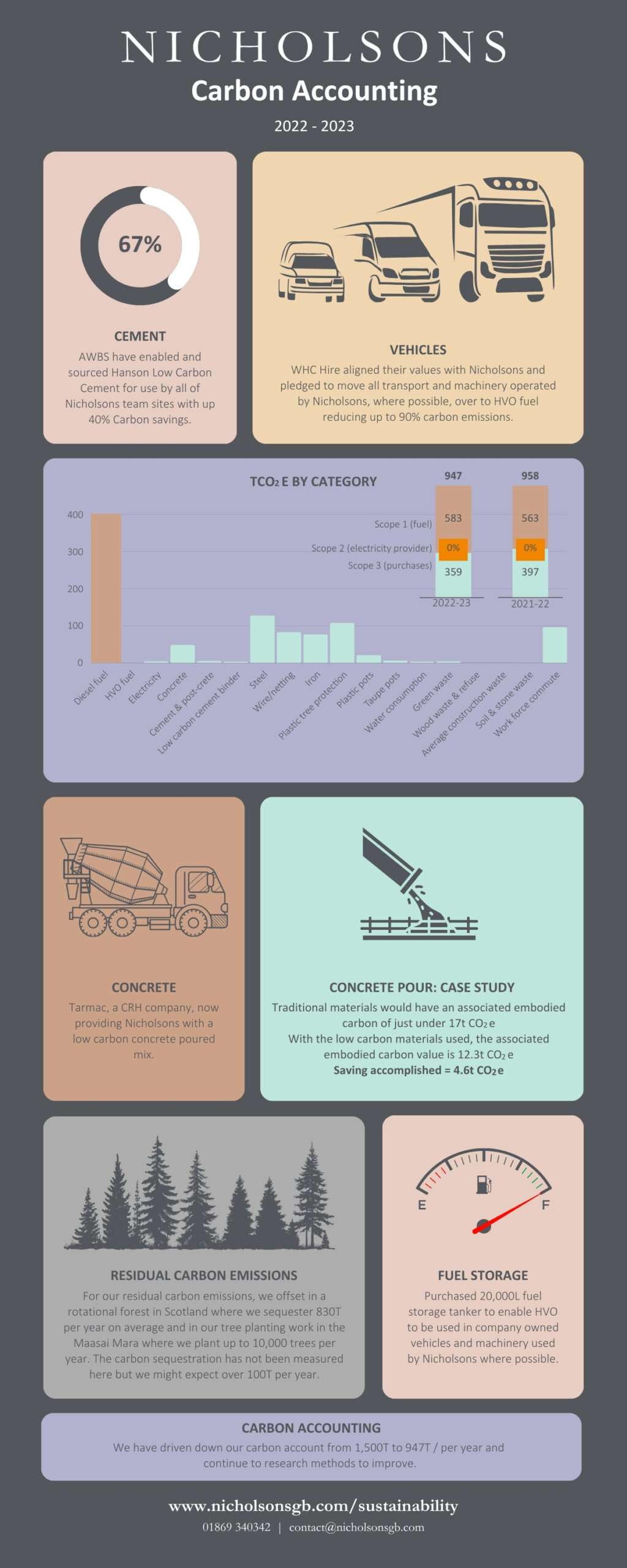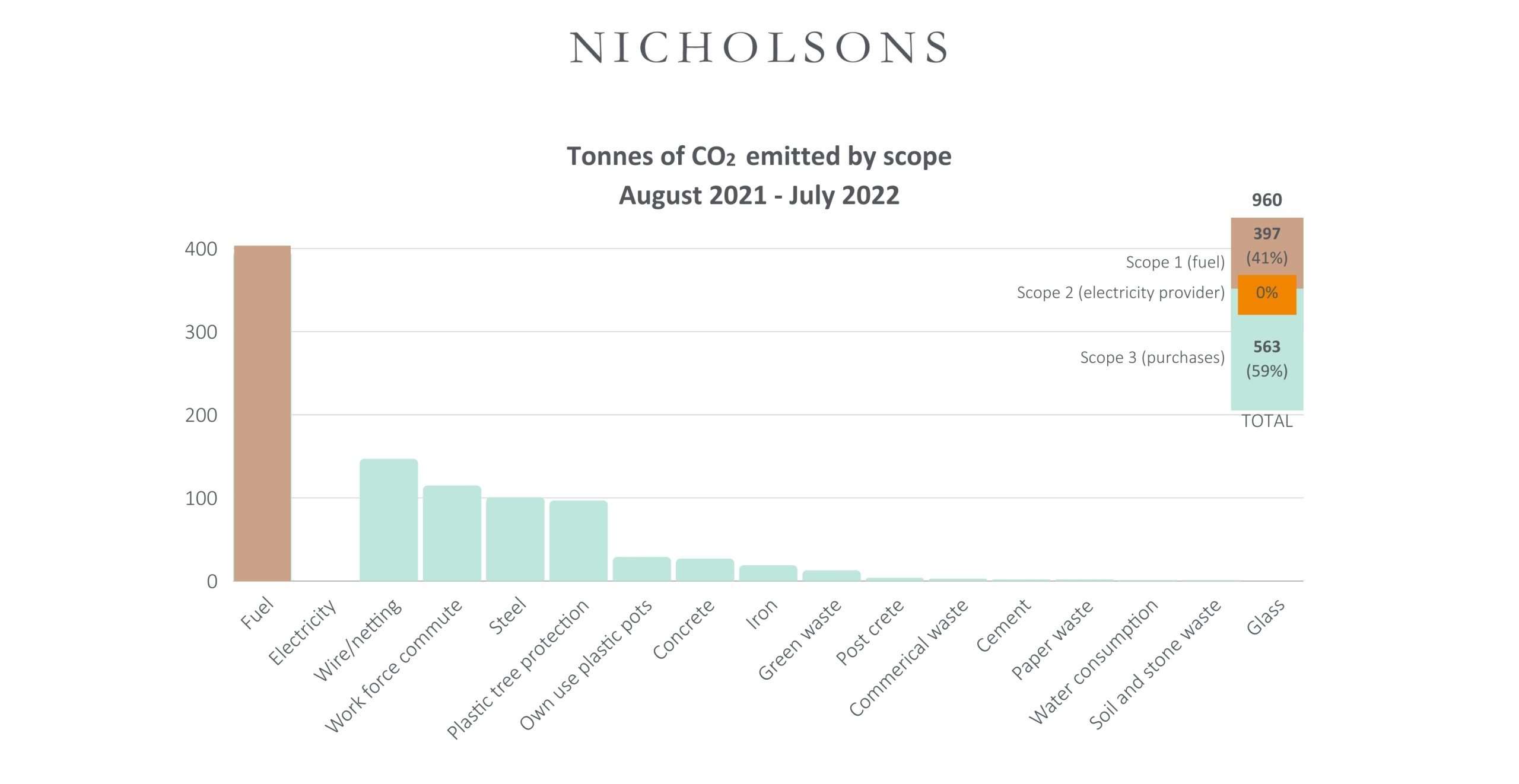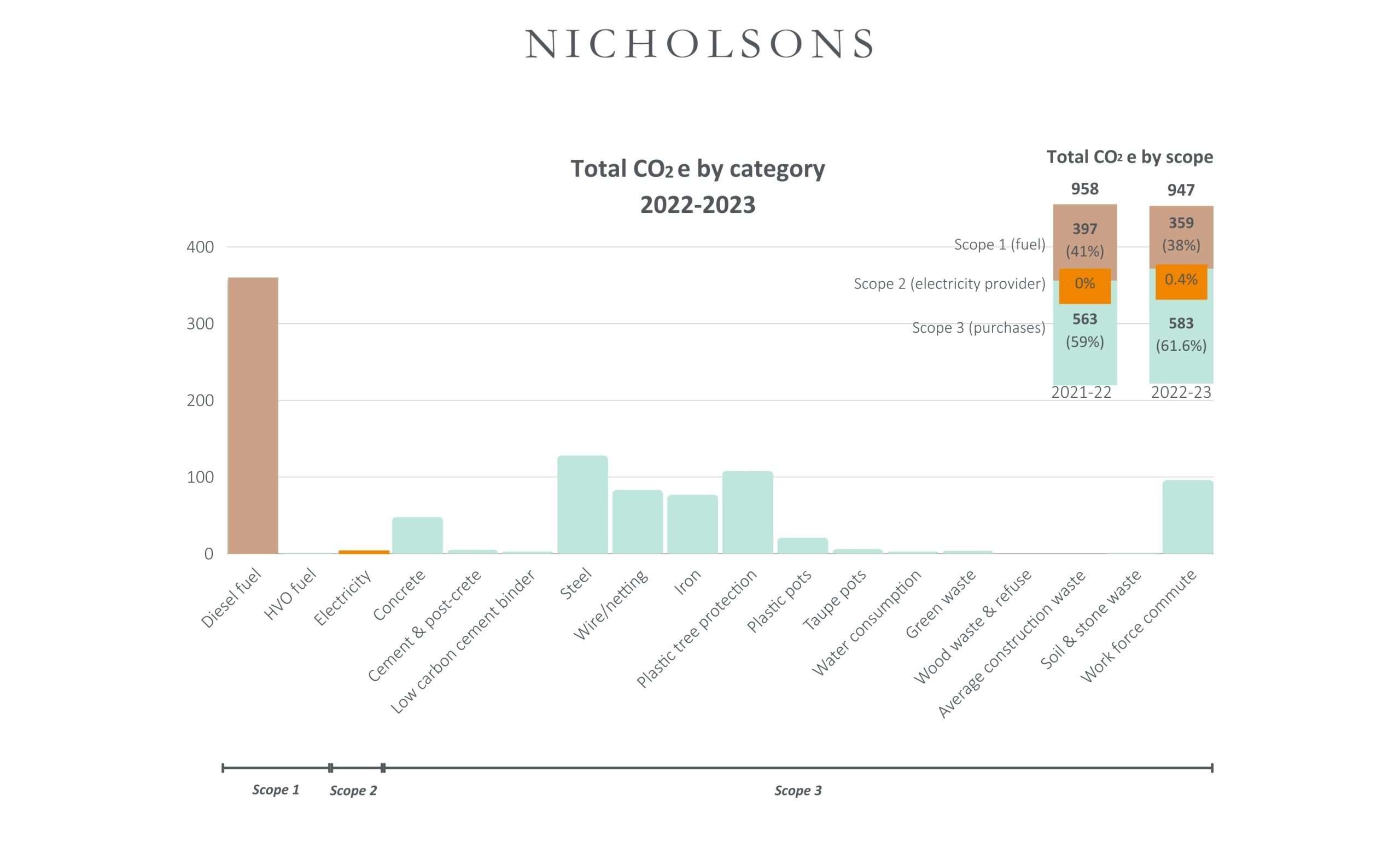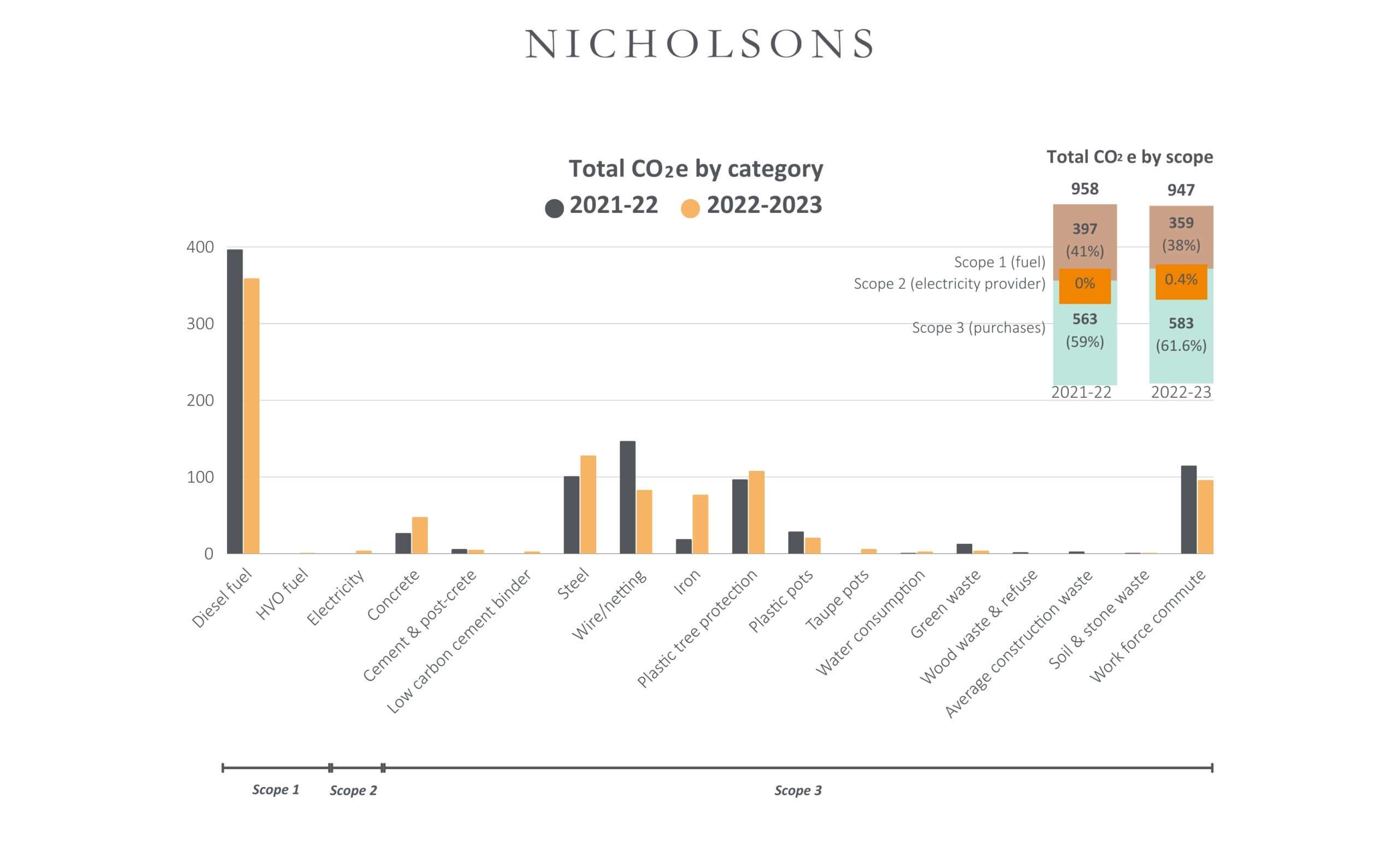Our Carbon Maths
Carbon accounting is complex in a small to medium business.
At Nicholsons we measure and take responsibility for ALL our carbon impacts in scope 1 (fuel), scope 2 (electricity provider) and scope 3 (purchases). This is unusual as most companies stop at scopes 1 & 2.
At Nicholsons we have driven down our carbon account from 1500T to 947T / per year and continue to research methods to improve.
Our largest wins were using low carbon cement and HVO fuel.
For our residual carbon emissions, we offset in a rotational forest in Scotland where we sequester 947T per year on average and in our tree planting work in the Maasai Mara where we plant up to 10,000 trees per year. The carbon sequestration has not been measured here but we might expect over 100T per year.
Additionally, we are embarking on tropical forest renovation project in Kakamega in Kenya. This project, fully funded by Nicholsons, will have very high impacts on biodiversity and nature.
Why are we not registered with PAS 2060? We decided to offset with our friends in Africa where we have been involved in the Maasai community for over a decade. Our project is run by Women in the Wild and has huge societal benefits alongside carbon and nature. We believe that carbon accounting must not be a tick box exercise but takes honest responsibility for our emissions and seeks to minimise our impact worldwide.
As a company, we work hard to minimise your project’s emissions. Upon the completion of all landscaping and fencing projects, Nicholsons set aside funds to “inset” the project’s greenhouse gas emissions – expected cost of 0.1% of the project total (these contributions go towards conservation projects in Africa).
Annoying fact: our highest emissions are in our fencing materials where we fence to protect establishing forests to optimise carbon sequestration – a home goal!
Please contact us if you would like to support our endeavour by making a similar contribution.





